Helping foundered horses is my passion. Of course I love helping ALL horses. Foundered horses just hit close to home. It was my own horse foundering and the wonderful farrier who helped me with him that brought me to hoof care.
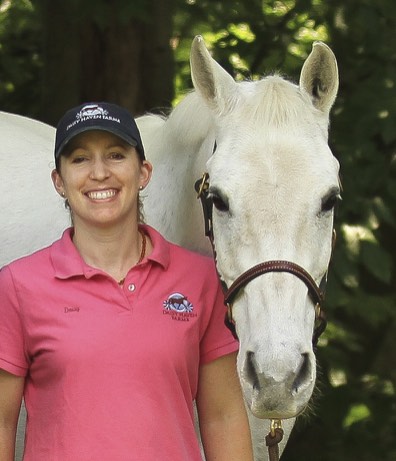
I am able to help many foundered horses barefoot, especially with the temporary use of therapeutic boots. When a foundered horse needs protection with a boot long term, however, I prefer to apply glue on composite shoes, like the EasyShoe Performance and Performance N/G.
Here is a case study where the horse was doing very well in therapeutic boots, but for several reasons, we felt the horse would benefit from shoes.
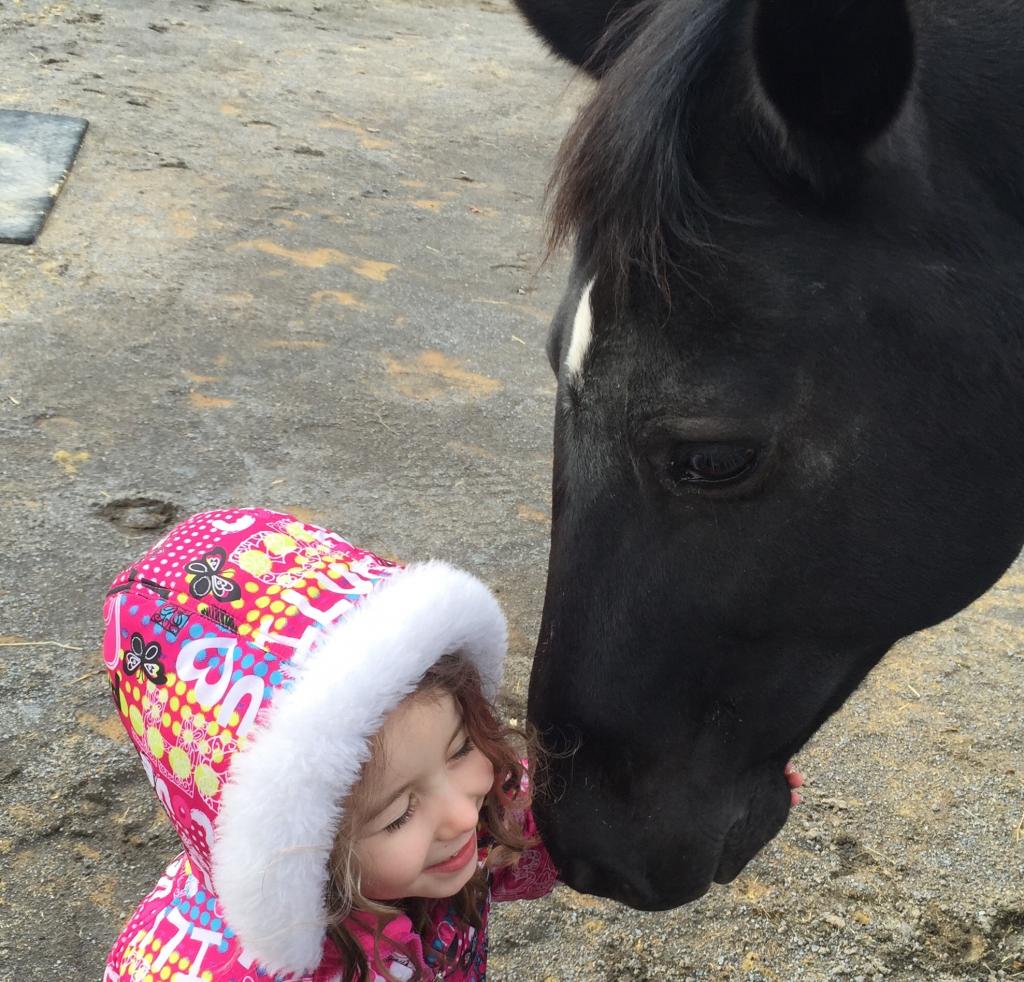
Mia is a very sweet Rocky Mountain Horse who has a history of chronic laminitis. Mia came to Daisy Haven Farm at the end of February for more intensive rehabilitation.
When Mia arrived at Daisy Haven Farm, our veterinarian came out to see her and we reviewed her history. He made some modifications to her meds, and pulled blood to check her metabolic status. She was very painful even on bute, rocking back to take weight off her front feet, with strong digital pulses. Here are what her front feet looked like at that time:
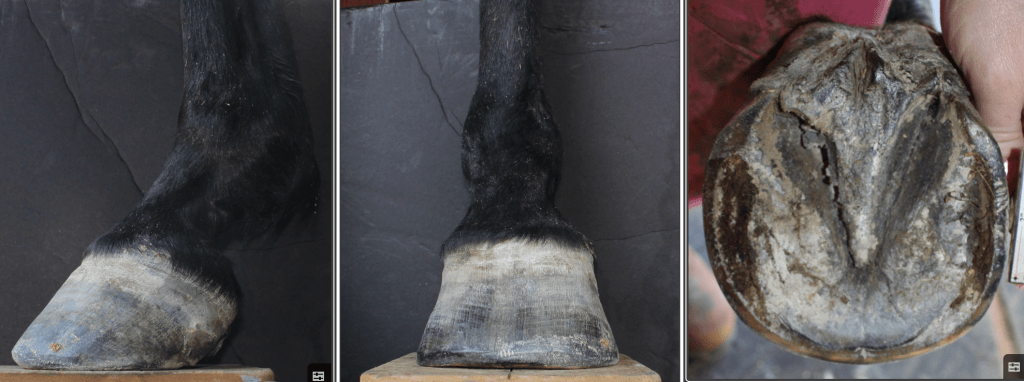
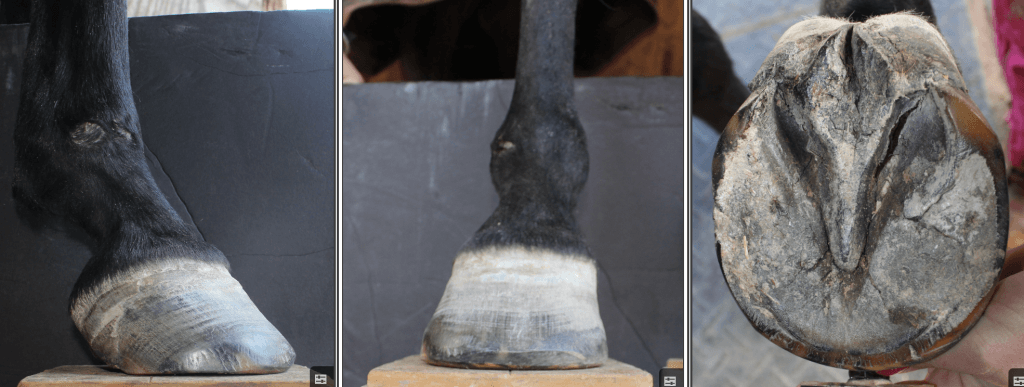
Externally, Mia’s feet didn’t look terrible but she was so painful I knew internally she was having bigger problems. The radiographs confirmed what her pain level indicated:
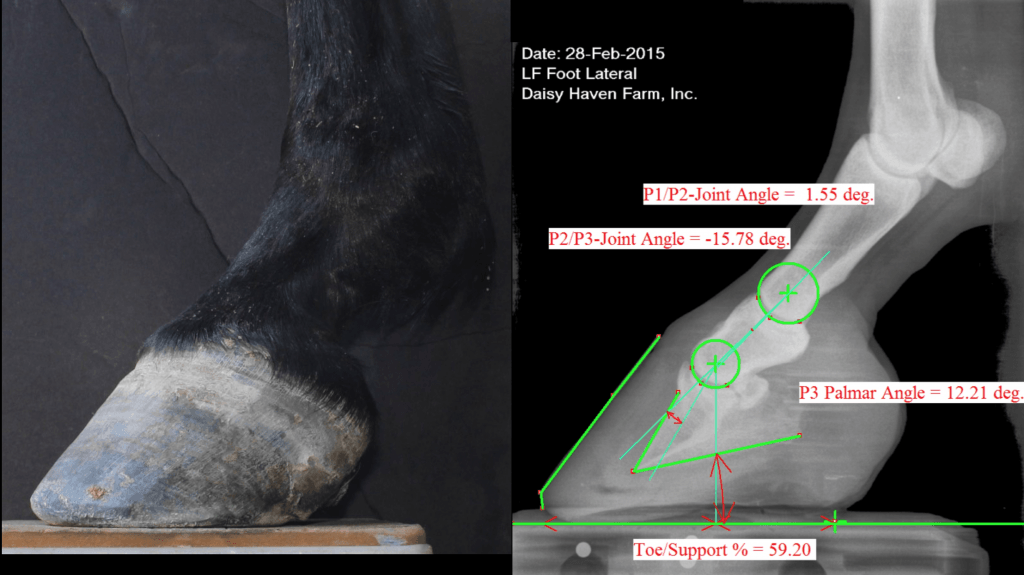
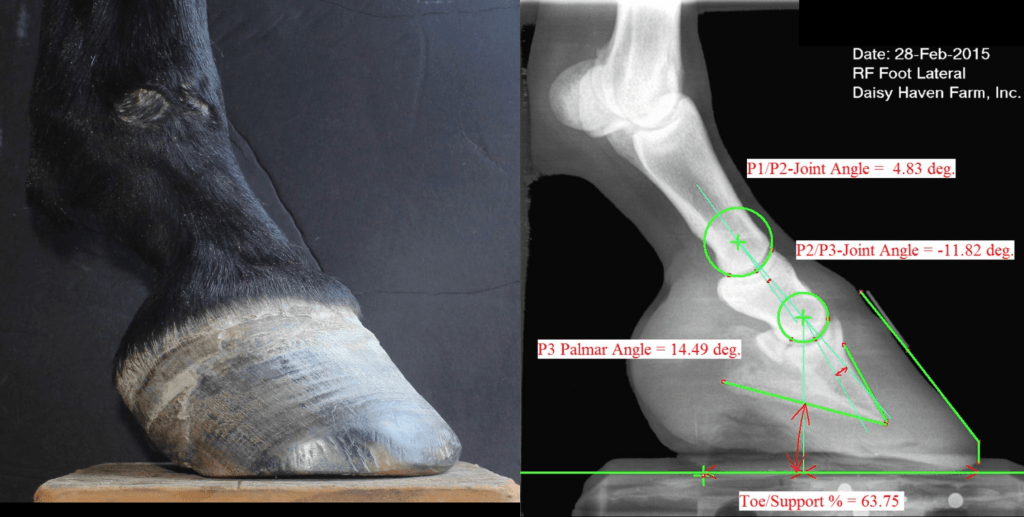
If you are familiar with my previous blogs, like this one here, I have four criteria that I aim for when rehabilitating the foot. Of course they are guidelines, and not rules, but are the foundation I work to build for each horse to establish Static Balance. Here they are in summary:
-50/50 ratio of toe to heel support around the center of rotation of the hoof capsule
-3-8 degree palmar P3 angle
-Minimal flare and distortion in the hoof capsule
-Capsular Alignment and Phalangeal Alignment (straight Hoof Pastern Axis)
In Mia’s situation, while her hoof capsule was only minimally distorted, her foot print was slightly forward, her palmar P3 angle too steep, as well as having Capsular and Phalangeal misalignment. After applying my initial trim, here is what I was able to gain for Mia:
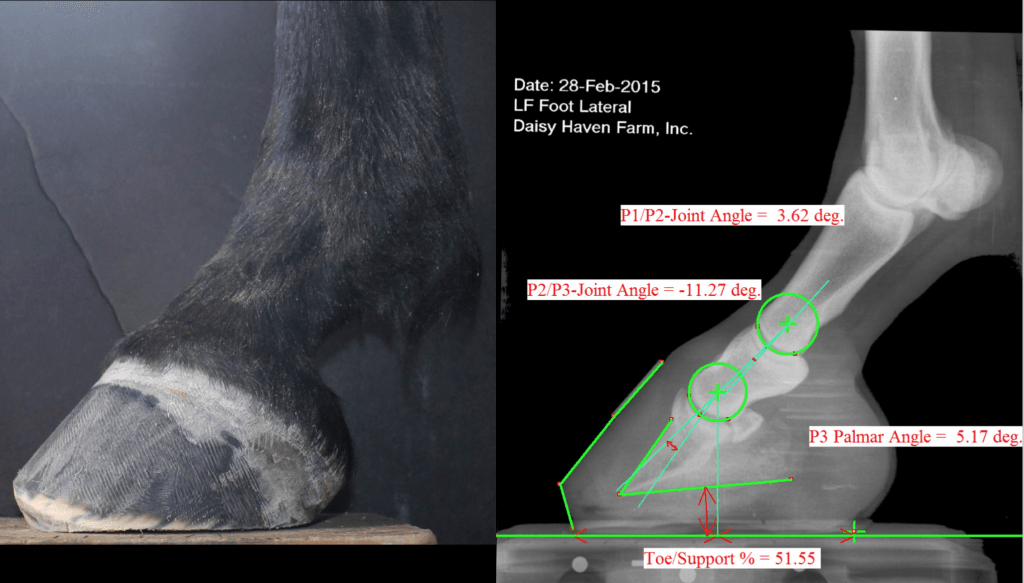

While we had significant improvements in our goals for static balance, I was disappointed that the phalangeal alignment (hoof pastern axis, ie HPA) wasn’t straighter after the trim especially on the left front foot, even though I had lowered the heel as proactively as possible:
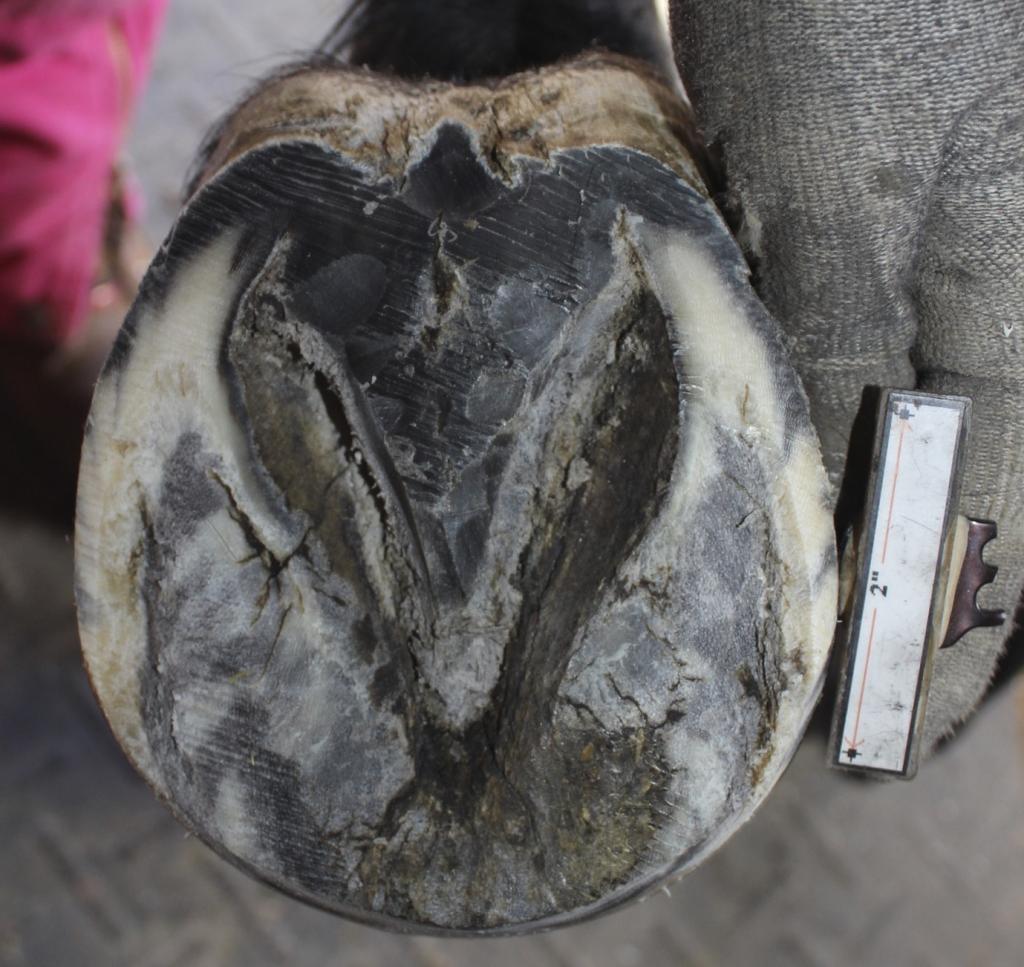
My experience is usually the HPA straightens out very quickly. I had to be satisfied this was the best we could achieve today. The damage to her feet was quite extensive with significant bruising in her laminar wedge:
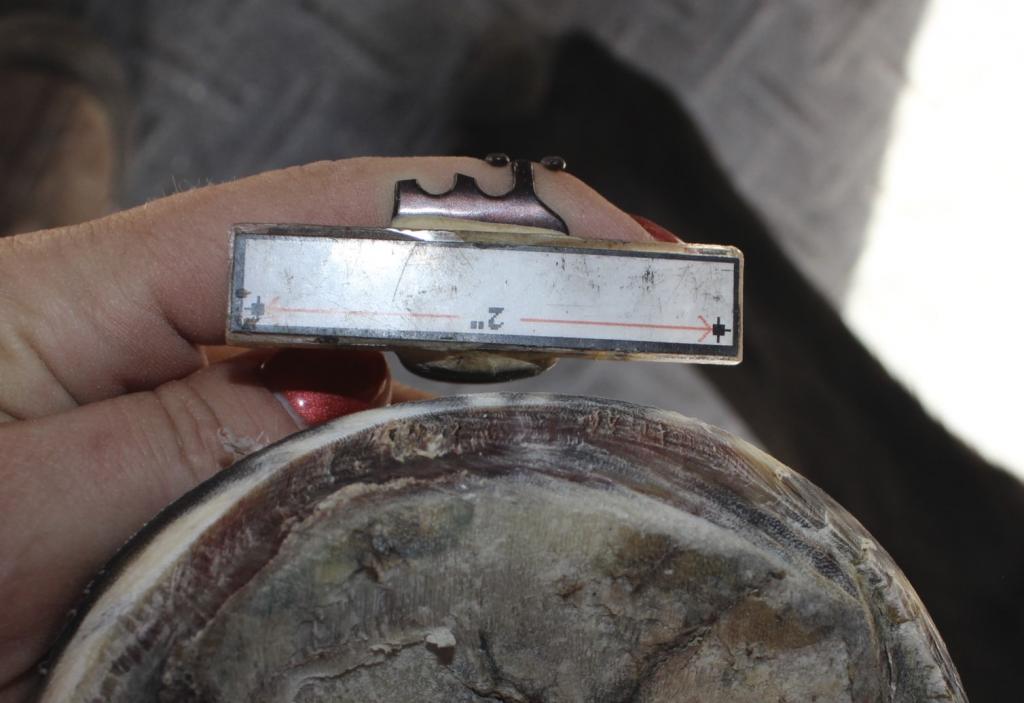
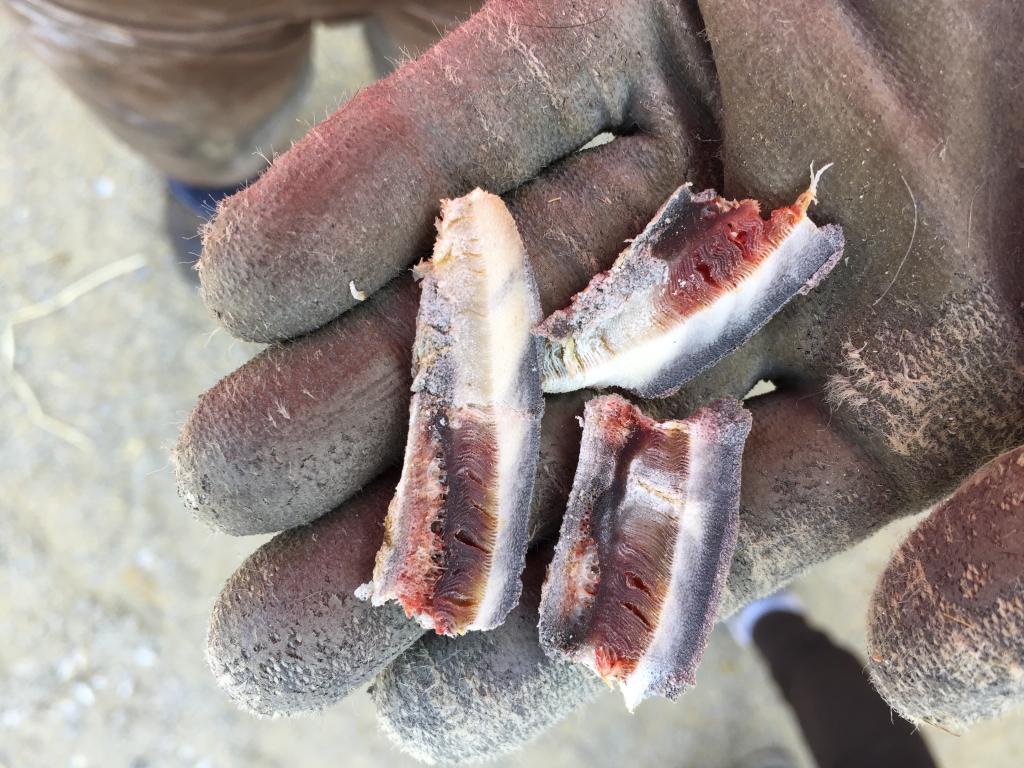
Mia quickly became more comfortable and bute was eliminated. After three months despite the improvement to her comfort level, Mia wasn’t quite ready to go without protection, and we started thinking about shoes instead of boots:
1. EasyShoes provide additional opportunity to create mechanics for Mia’s feet than we have in boots.
2. Mia’s activity level has increased significantly as she was feeling better, and therefore less risk of tossing a shoe than a boot when she kicks up her heels.
3. As we started thinking about Mia going home, her owner suffers from significant arthritis in her hands, and expressed a preference to have shoes instead of boots if it wasn’t detrimental to Mia.
This past week we applied the EasyShoe Performance to Mia’s front feet after her trim. I am very happy with the results. While we were able to achieve our static balance goals in the right front foot very quickly, the left front had proven difficult to get the HPA realigned. With the addition of the EasyShoe Performance, the HPA improved even further, which will help develop the healthiest hoof capsule possible for Mia.
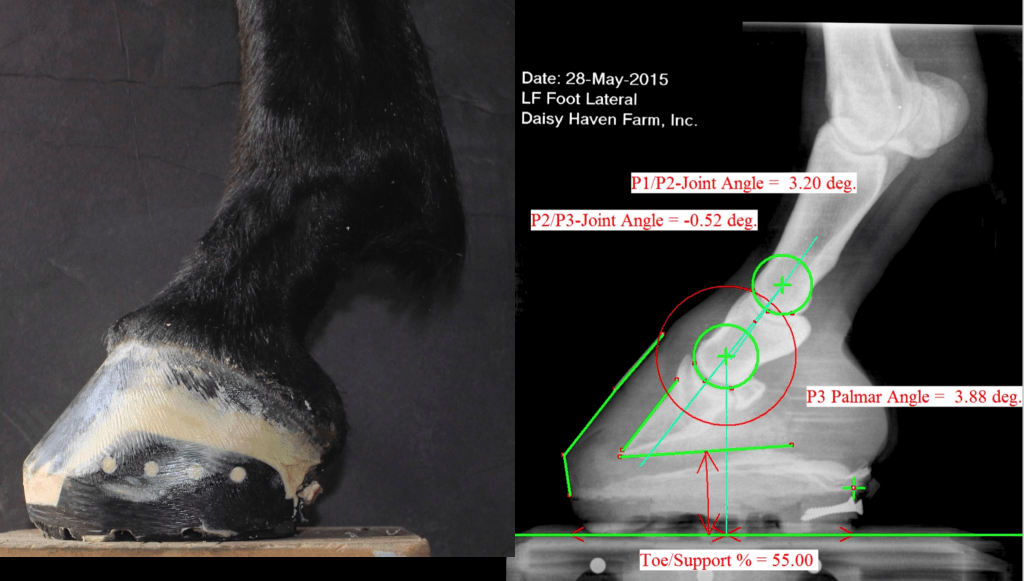
The two biggest considerations for Mia when going from therapeutic boots to EasyShoes was:
1. Initially I thought she’d fit well in an EasyShoe Performance size one, but didn’t like how it made her footprint bigger overall. I like to avoid additional leverage on the laminae when a foundered horse is healing. By going to the size zero, we were able to keep the footprint smaller which reduces leverage. Here is how the size zero shoe fit without the glue:
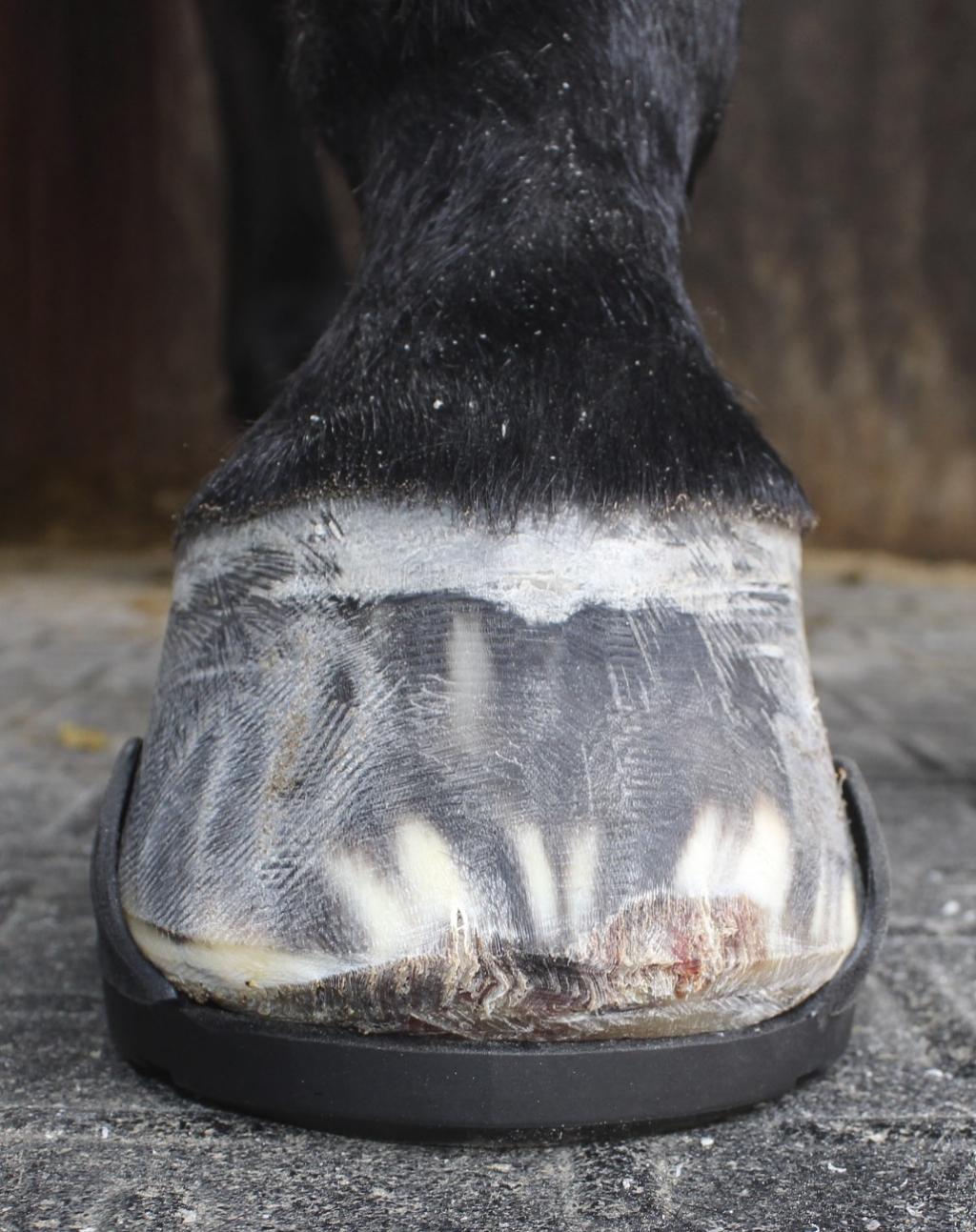
While the wings of the shoe gap a bit, the fit was much better overall.
2. We also added a spacer in the back of the shoe to help with fit and stabilize the key hole in the shoe. I find caudal support extremely helpful in rehabilitating the foundered foot. Here is a photo comparing the size one EasyShoe Performance on the left and the size zero EasyShoe Performance with a 10 mm spacer on the right. Notice how the size zero is just a little bit smaller overall. We like to glue our spacers in with Gorilla Gel Super Glue*, then screw in for stability.
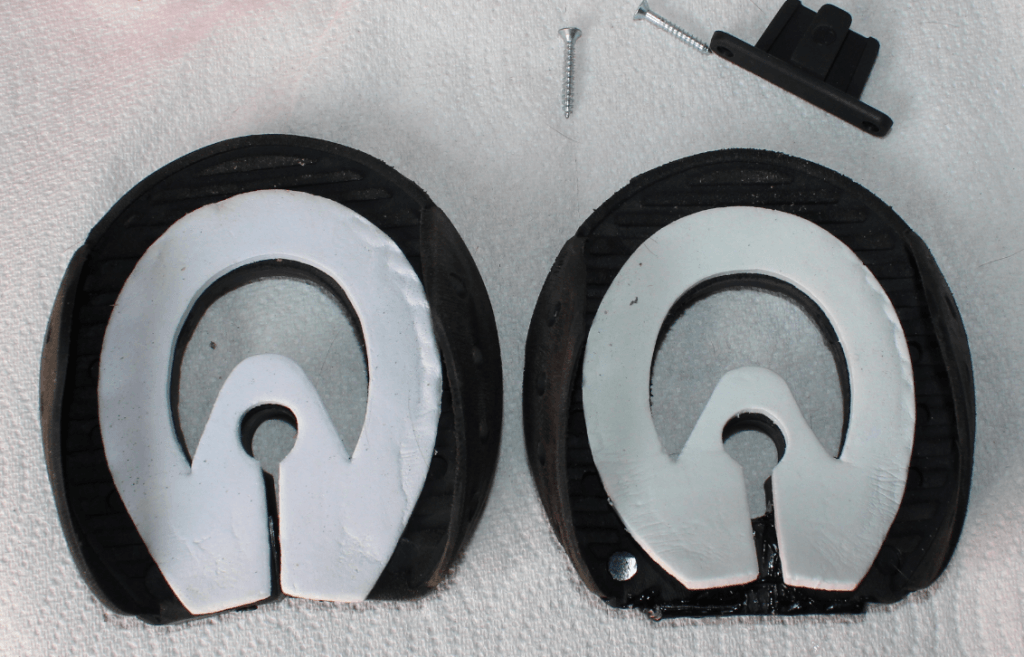
3. Finally we finished the bottom of the shoe by easing the heel landing, and rolling the toe to create a ball bearing effect for Mia.
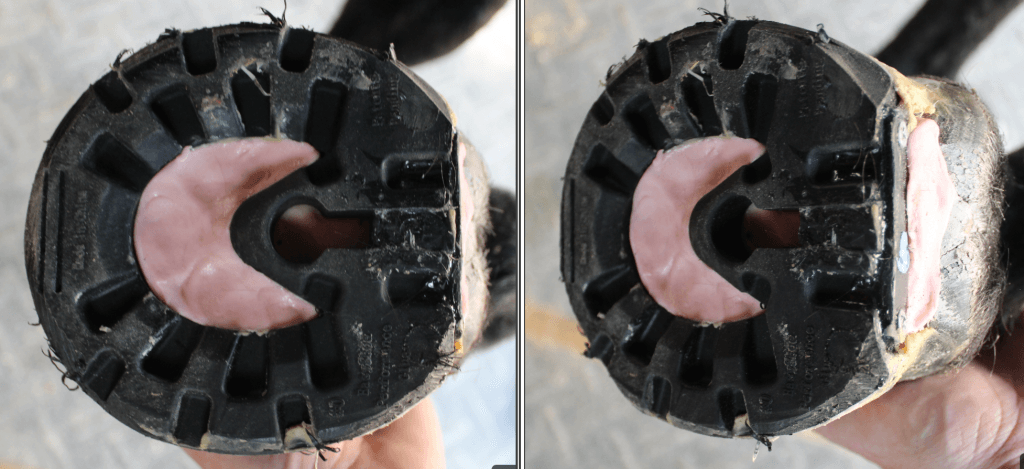
Mia’s feet have improved tremendously since arrival at Daisy Haven Farm. I am excited to be able to send her home, healthier, happier, and with the help of her owner and veterinarian continuing her rehabilitation going forward.

For more information please see:
www.DaisyHavenFarm.com
www.IntegrativeHoofSchool.com
* Editor’s note: EasyCare does not sell Gorilla Gel Super Glue.




